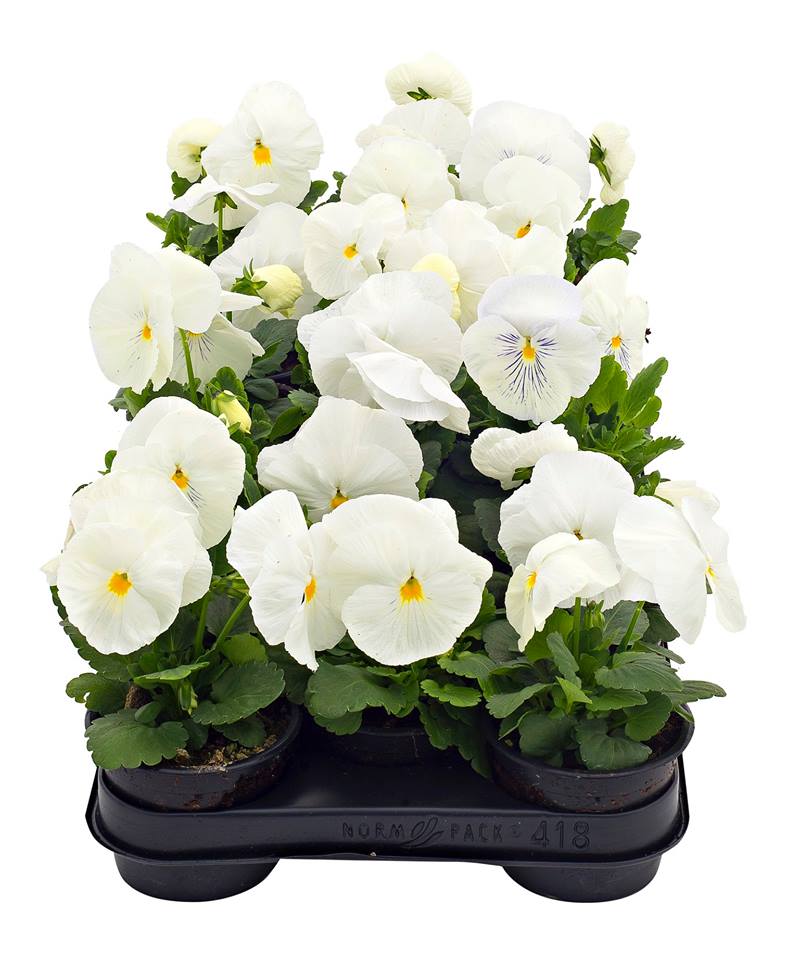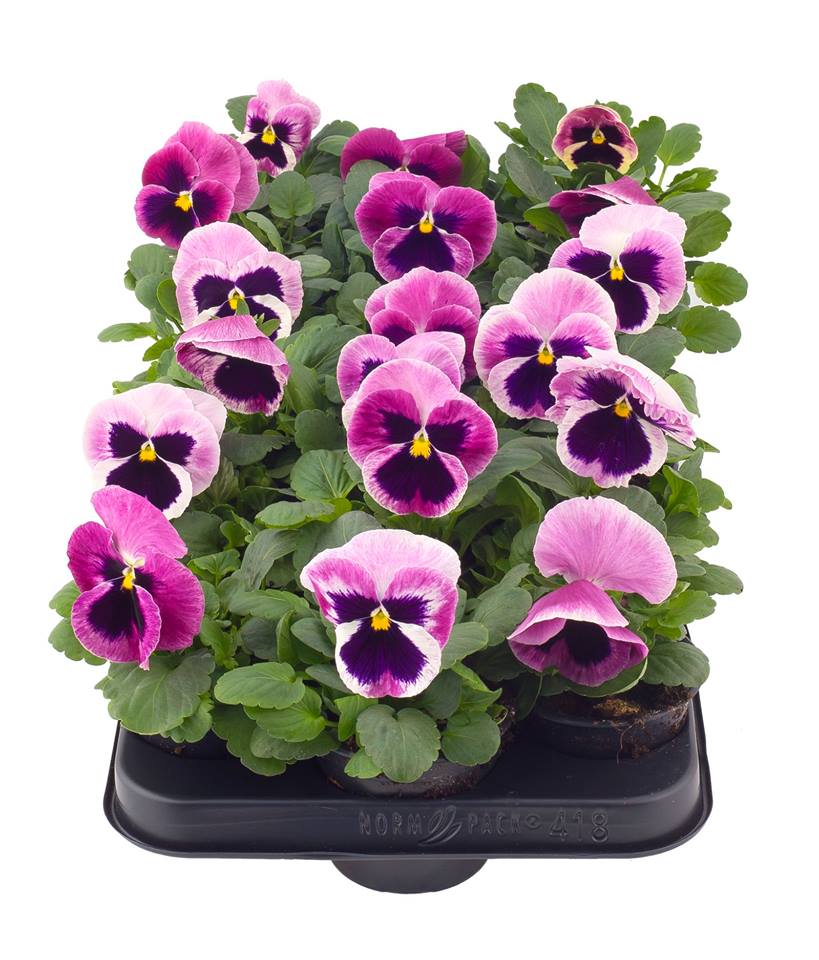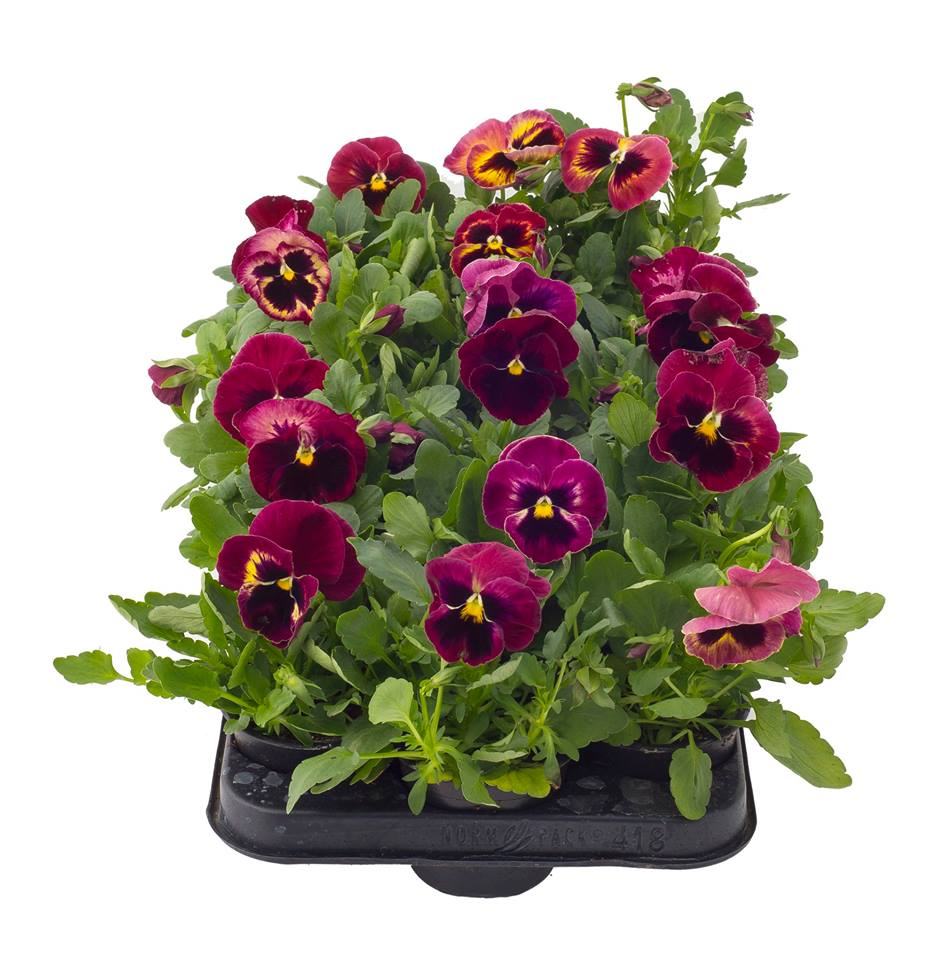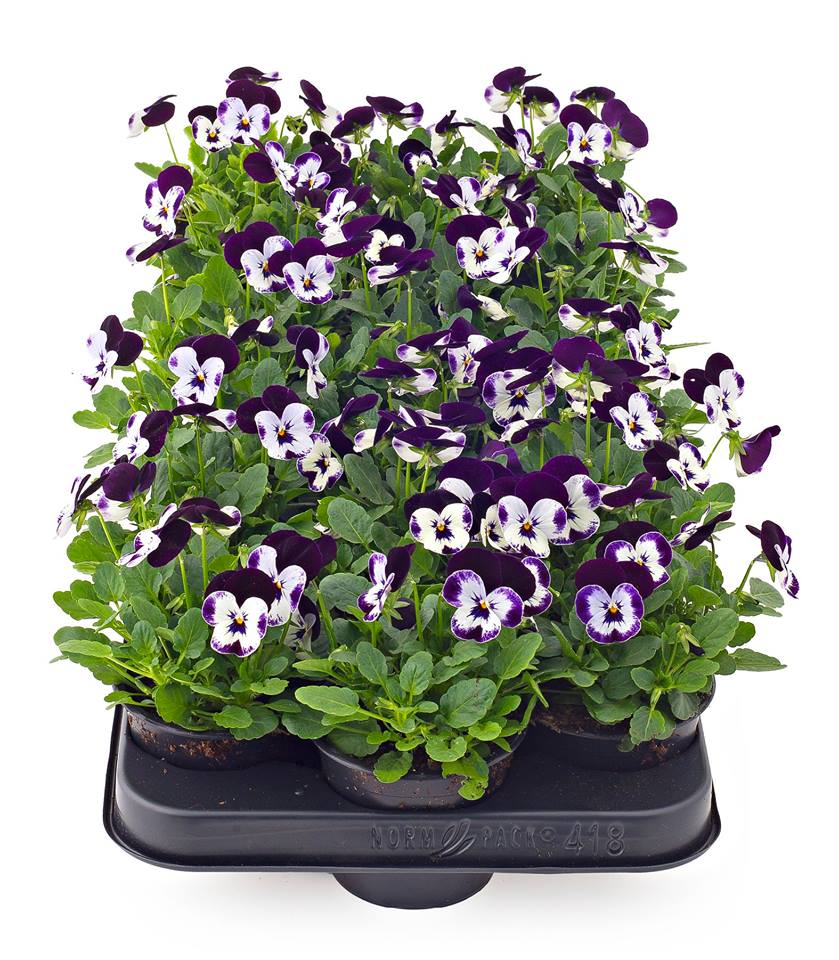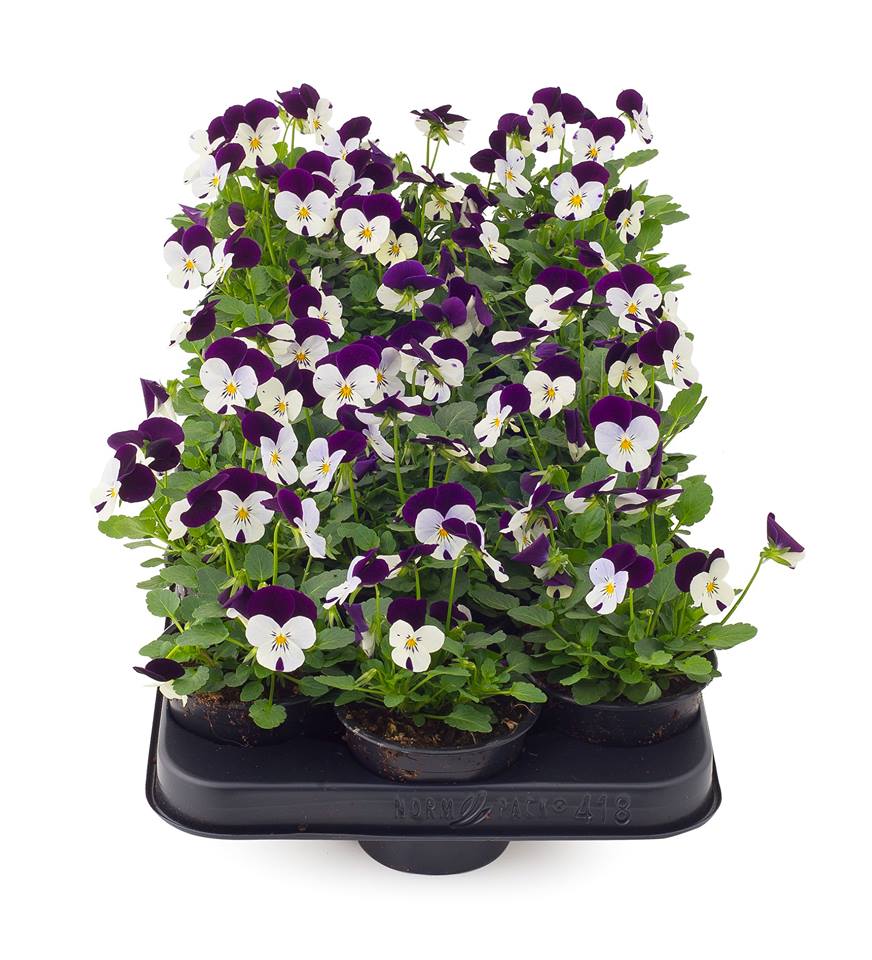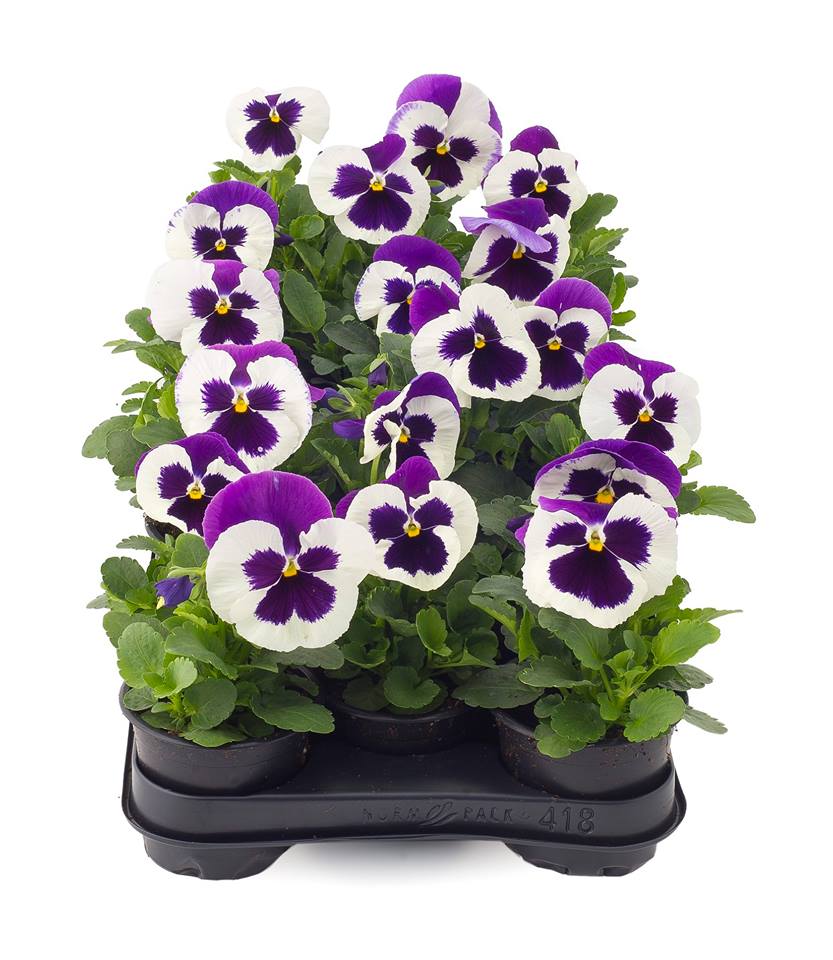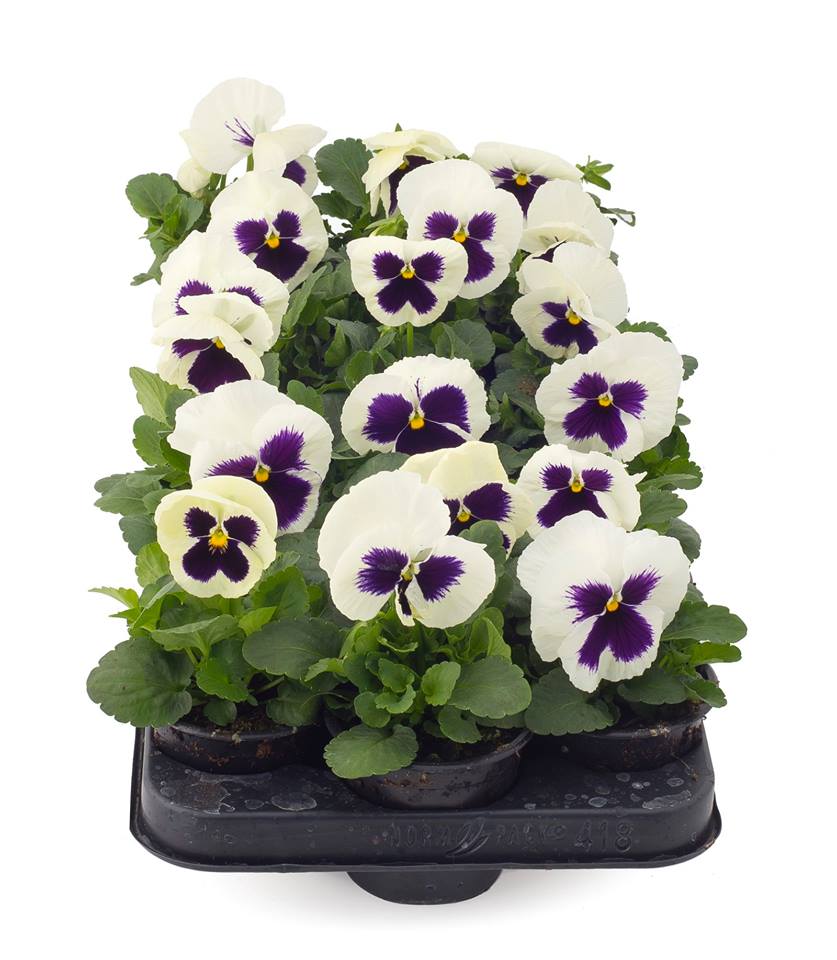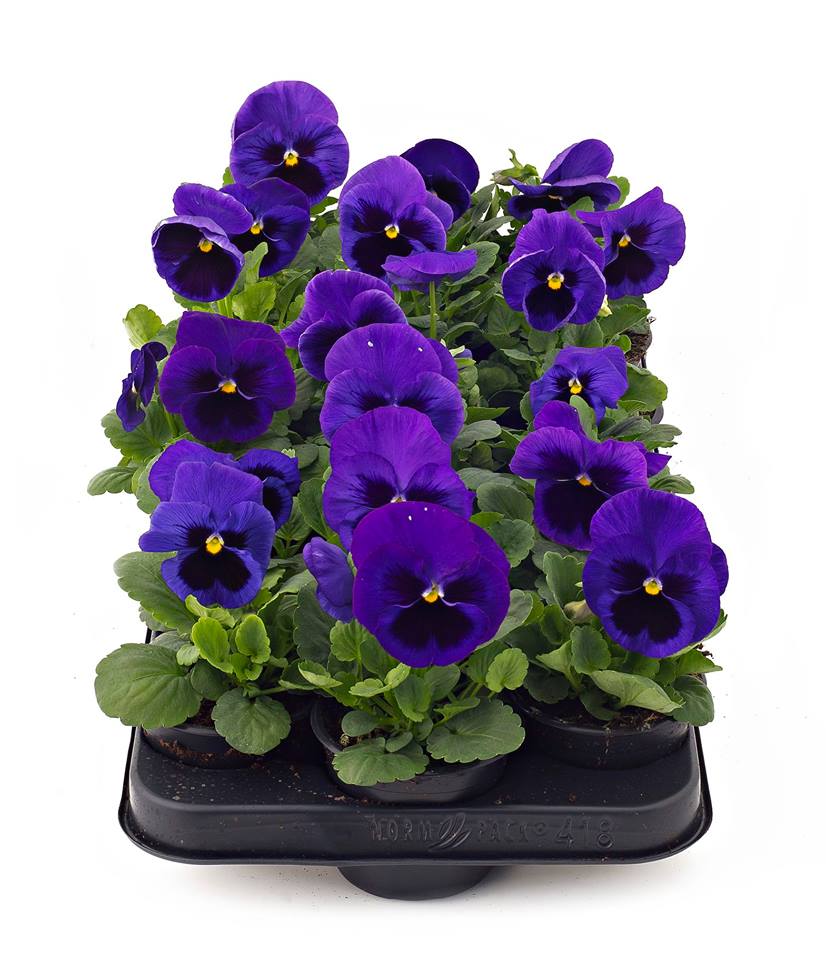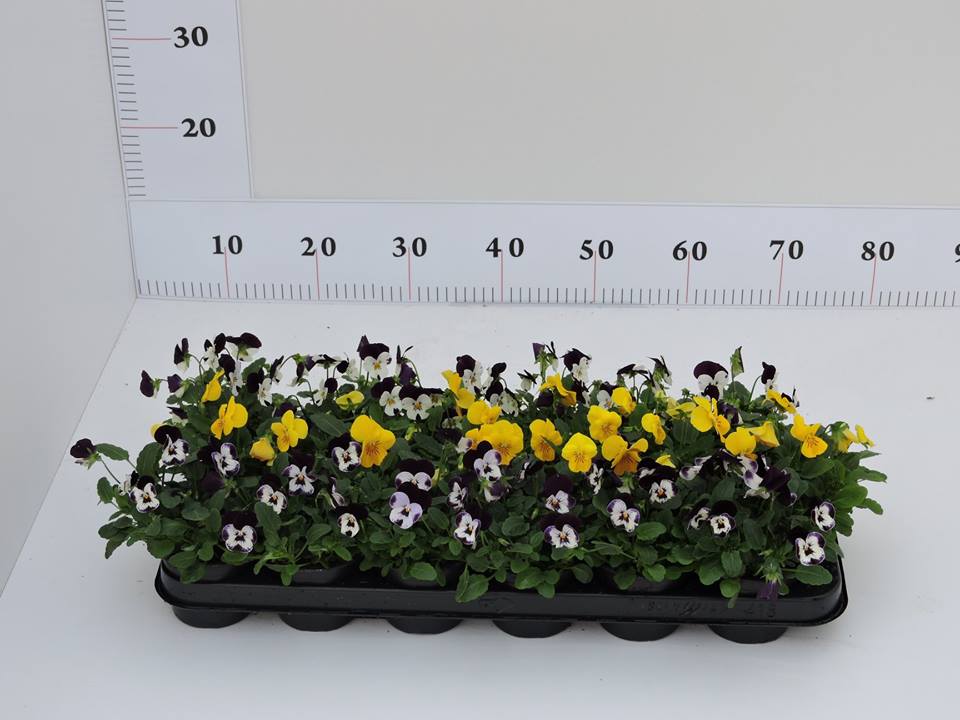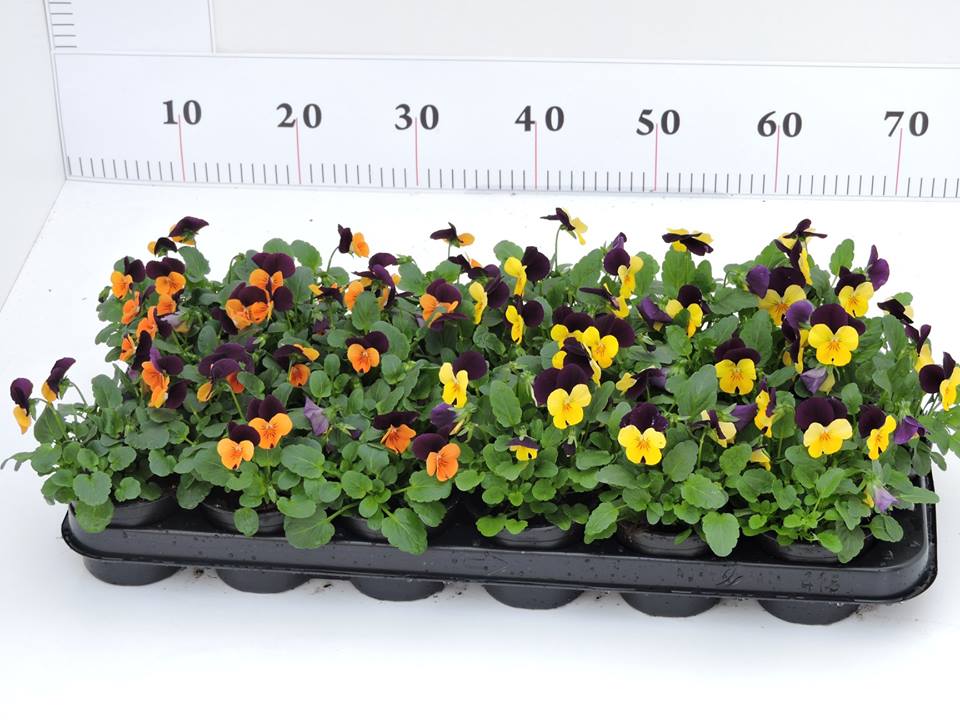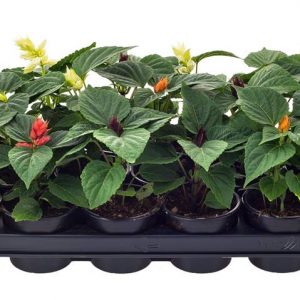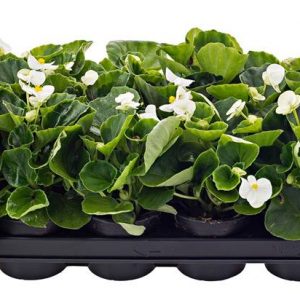Πανσές Γλάστρα 9εκ
Malformed and puckered leaves indicate calcium deficiencies. To prevent this, fertilize with calcium nitrate or add calcium sulfate to the growing media before transplant. Boron deficiencies can be distinguished by tip abortion, upper leaf stunting, puckering and thickening of leaves, along with shortened internodes and/or a gnarled mass of lateral shoots. Boron deficiency is more prevalent during warm weather with frequent watering. pH levels below 6 will ensure boron is more readily available to the plant. A one-time application of Solubor will help overcome these problems.
Περιγραφή
Media: pH: 5.5 – 5.8, EC: Avoid EC above 1.5. Pansy roots are sensitive to ammonium salts.
Light: Provide 3,500 – 4,500 foot candles (12 – 15 total mols or 35,000 – 45,000 lux) to hasten flower induction. Supplemental lighting under low light conditions at 350 – 450 foot candles (35,000 – 45,000 lux) will enhance shoot and root growth.
Temperature: 68°F (20°C) days or as cool as possible during warm weather conditions. During the cool season, a night temperature of 59°F (15°C) will promote early flowering. Temperatures below 59°F (15°C) will promote a hardier plant, but will increase crop time and delay flowering. Average Daily
Temperature (ADT): 67°F (19°C)
Moisture: Alternate between moisture levels wet (4) and medium (2). Allow media to approach level (2) before re-saturating to level (4).
Humidity: 40 – 70%
Dehumidify: Provide horizontal airflow to aid in drying down the media through evapotranspiration, allowing better penetration of oxygen to the roots.
Fertilizers: Feed as needed at 100 – 150 ppm nitrogen with a calcium-based fertilizer (14-4-14). During cool weather production, ammonium-based feeds may encourage root rot problems. High nitrogen concentrations may promote stretching.
Nutrition: Malformed and puckered leaves indicate calcium deficiencies. To prevent this, fertilize with calcium nitrate or add calcium sulfate to the growing media before transplant. Boron deficiencies can be distinguished by tip abortion, upper leaf stunting, puckering and thickening of leaves, along with shortened internodes and/or a gnarled mass of lateral shoots. Boron deficiency is more prevalent during warm weather with frequent watering. pH levels below 6 will ensure boron is more readily available to the plant. A one-time application of Solubor will help overcome these problems.

